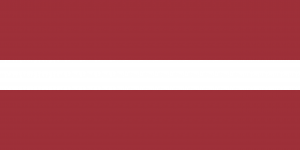Language/Standard-latvian/Grammar/The-past-tense-and-other-verb-forms
As a Standard Latvian language teacher, I have noticed that one of the most challenging aspects of Latvian grammar for beginners is the formation of verb tenses. In this lesson, we will explore the past tense and other verb forms, including infinitives and participles. By the end of this lesson, you will have a solid understanding of how to conjugate verbs in the past tense and how to form other verb forms correctly.
Once you've mastered this lesson, take a look at these related pages: Conditional Mood & 0 to A1 Course.
The past tense
The past tense is used to describe actions that were completed or occurred in the past. In Standard Latvian, the past tense is formed by adding the suffix "-d" or "-t" to the stem of a verb. For example:
| Standard Latvian | Pronunciation | English |
|---|---|---|
| dziedāt (to sing) | /ˈd͡ziɛ.daːt/ | sang |
| lasīt (to read) | /ˈla.siːt/ | read |
| skriet (to run) | /skriːɛt/ | ran |
Note that not all verbs follow this pattern, and some have irregular past tense forms. Therefore, it's essential to memorize the past tense forms of the most common verbs to use them correctly in speech and writing.
Here are a few examples of irregular past tense forms:
| Standard Latvian | Pronunciation | English |
|---|---|---|
| būt (to be) | /buːt/ | was/were |
| dot (to give) | /dot/ | gave |
| justies (to feel) | /ju.sti.ɛs/ | felt |
Do not get overwhelmed by the many irregular past tense forms. With practice, you will develop a feel for which verbs have regular past tense forms and which do not.
Other verb forms
In addition to the past tense, there are other verb forms that you need to know to become proficient in Latvian. Here are three of the most commonly used forms:
Infinitive form
The infinitive form of a verb is usually marked with the suffix "-t". It is used in various contexts such as expressing a command or a request, or as the complement of other verbs.
| Standard Latvian | Pronunciation | English |
|---|---|---|
| dziedāt (to sing) | /ˈd͡ziɛ.daːt/ | to sing |
| lasīt (to read) | /ˈla.siːt/ | to read |
| skriet (to run) | /skriːɛt/ | to run |
Participle
The participle form can be present or past, and is often used as an adjective or to describe ongoing actions or states. The present participle ends with "-ošs", and the past participle ends with "-is".
| Standard Latvian | Pronunciation | English |
|---|---|---|
| dziedājošs (singing) | /ˈd͡ziɛ.daːjoʃs/ | singing (present participle) |
| lasījis (read) | /ˈla.siː.jis/ | read (past participle) |
| skrienot (running) | /ˈskrʲɛ.noht/ | running (present participle) |
Imperative
The imperative form is used to command someone to do something. It is formed by using the stem of the verb with the appropriate endings.
| Standard Latvian | Pronunciation | English |
|---|---|---|
| dziedi! (Sing!) | /ˈd͡ziɛ.di/ | Sing! |
| lasi! (Read!) | /ˈla.si/ | Read! |
| skrien! (Run!) | /ˈskriɛn/ | Run! |
Tips for mastering verb forms
Here are some tips that will help you in mastering verb forms in Latvian:
- Learn the past tense forms of the most common verbs, and practice using them.
- Try to memorize the infinitive and participle forms of verbs you use often.
- Learn the rules for forming participles and imperatives.
- Learn the common irregular verbs and practice using them in context.
Useful resources like grammar books, online sources, or conversations with native Latvian speakers can also be helpful in mastering verb forms.
In conclusion, mastering verb forms is an essential component of learning Standard Latvian. In this lesson, we have learned the past tense and other verb forms such as infinitives, participles, and the imperative form. By mastering these verb forms, you will be able to express yourself more accurately and confidently in Latvian.
Other Lessons
- Indirect objects and the dative case
- Future Tense
- Gender
- The verb to be and basic sentence structure
- Conditional Mood
- The subjunctive mood and wishes
- How to Use Be
- Questions
- Negation
- Nouns and their declensions

